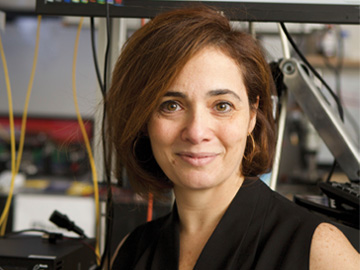
In late June, I had the pleasure of participating as a speaker and advisor in the Optica Foundation’s 2023 Siegman International School on Lasers in Dublin, Ireland. It was truly stimulating and enjoyable to interact with the 100 student attendees, who had traveled from homes and institutions in Europe, North and South America, Asia, Africa and Australia, drawn by their shared interest in optics and photonics.
Not surprisingly, given the audience members’ varied backgrounds in optics, questions often came from unexpected directions. Those questions sparked discussion and suggested new perspectives—even to some of us who have been in the business for decades. It was a great example of how diversity strengthens our science.
That experience was fresh in my mind when I heard the news, on 29 June, that the US Supreme Court had ruled that the race-conscious admissions programs of two schools, Harvard University and the University of North Carolina, were unlawful under the US Constitution. The decision effectively ended more than 50 years of race-based affirmative action in US higher education. The Court’s ruling was widely expected—but its sudden reality at the end of June still came as a shock.
Affirmative action is a topic that raises strong emotions on all sides. My own view is that, while sometimes flawed in their implementation, race-conscious policies in education have made the United States and the world in general a better place over the past half-century. In the US, they have done so by making its top universities a better reflection of the country as a whole—and by increasing opportunities for groups disadvantaged by the legacy of generations of racism and, at one time, state-sanctioned discrimination. Now, such affirmative-action policies are no longer part of the toolkit available for building a more equitable society.
Almost everyone agrees that one immediate impact of the Court’s decision will be to reduce admissions of Black and Latino students to the country’s elite universities. (Indeed, that has been the experience in US states, such as California and Michigan, that have previously banned race-conscious admissions policies.) It’s also believed that the decision could have spillover effects on race-conscious hiring by employers and on other diversity-focused efforts. We’re concerned, for example, about possible unforeseen consequences for science and engineering societies’ DEI efforts, such as Optica’s Amplify Black Science and Optica Women Scholars programs.
The long-term impact of the ruling, though, will depend entirely on what the United States as a society chooses to do about it. While the decision closes off one route to diversity and equity, it leaves others open—both for the country’s elite universities and for the much wider array of institutions that actually graduate the vast majority of its undergraduate students. In a larger sense, the decision should once again focus attention on how to resolve the profound economic, social and racial inequities in the primary- and secondary-school pipeline that feeds university-level study.
As history shows, the work won’t be easy, in the United States or other countries. But it’s a goal that I believe Optica and the scientific community should passionately support. Diversity and equity make the world better—and make our science and technology richer.
—Michal Lipson,
Optica President
View Japanese, Chinese, French, German, and Spanish translations of this message:
